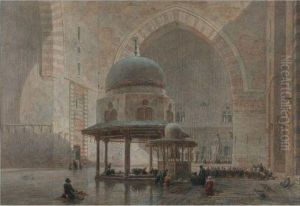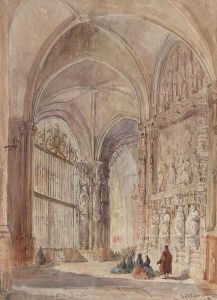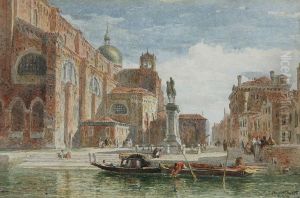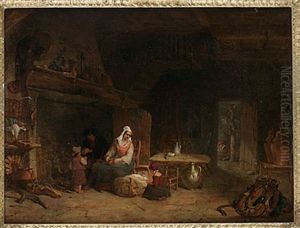Edward Goodall Paintings
Edward Goodall was an English engraver and landscape painter born in Leeds on June 17, 1794. His artistic career began under the tutelage of the landscape painter John Varley, where Goodall developed his skills in engraving. He was primarily known for his engraving work, which was a vital art form for reproducing and disseminating works of art before the advent of photography.
Goodall's engraving career was marked by his association with one of England's most beloved painters, J.M.W. Turner. He engraved many of Turner's works, contributing to the production of Turner's 'England and Wales' series, and he was highly regarded for his ability to capture the subtleties and complexities of Turner's paintings. His work was characterized by its exquisite detail and faithful rendering of the original paintings, a testament to his skill and dedication to the craft.
Beyond his contributions to engraving, Goodall also pursued landscape painting, though he is less known for this aspect of his career. His sons, Frederick Goodall and Walter Goodall, also became artists, with Frederick achieving notable success as a painter. Edward Goodall's influence extended through his work to the cultural fabric of Victorian England and helped to shape the visual legacy of one of the country's most famous painters.
Goodall was a member of the Royal Academy and exhibited his works there, as well as at the Society of British Artists. Despite the prominence of photography later in his life, Goodall continued to work as an engraver until his later years. He passed away on April 11, 1870, in London. His legacy is preserved in the collections of various museums and galleries, including the British Museum and the Victoria and Albert Museum, where his engravings remain a testament to his skill and his contributions to the art world.



